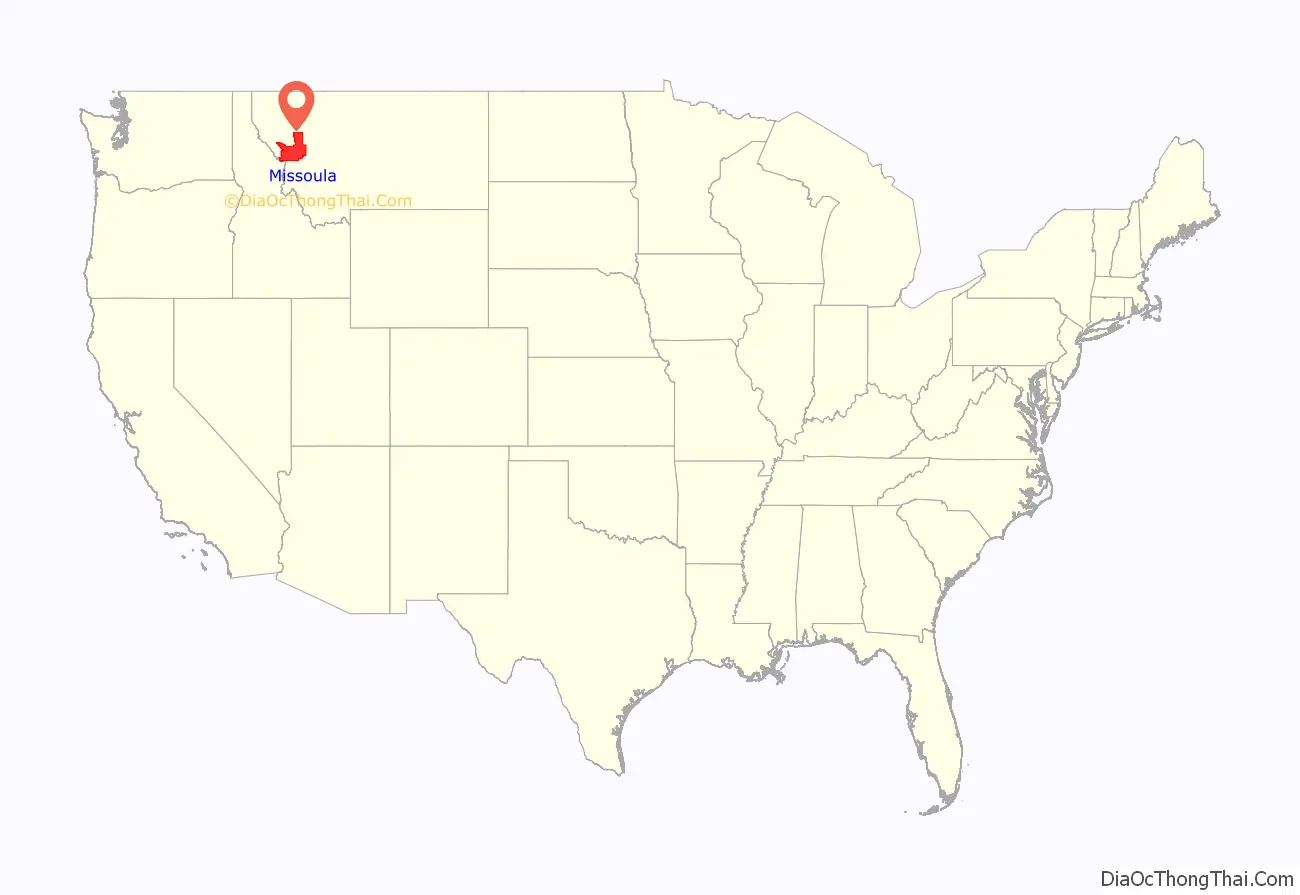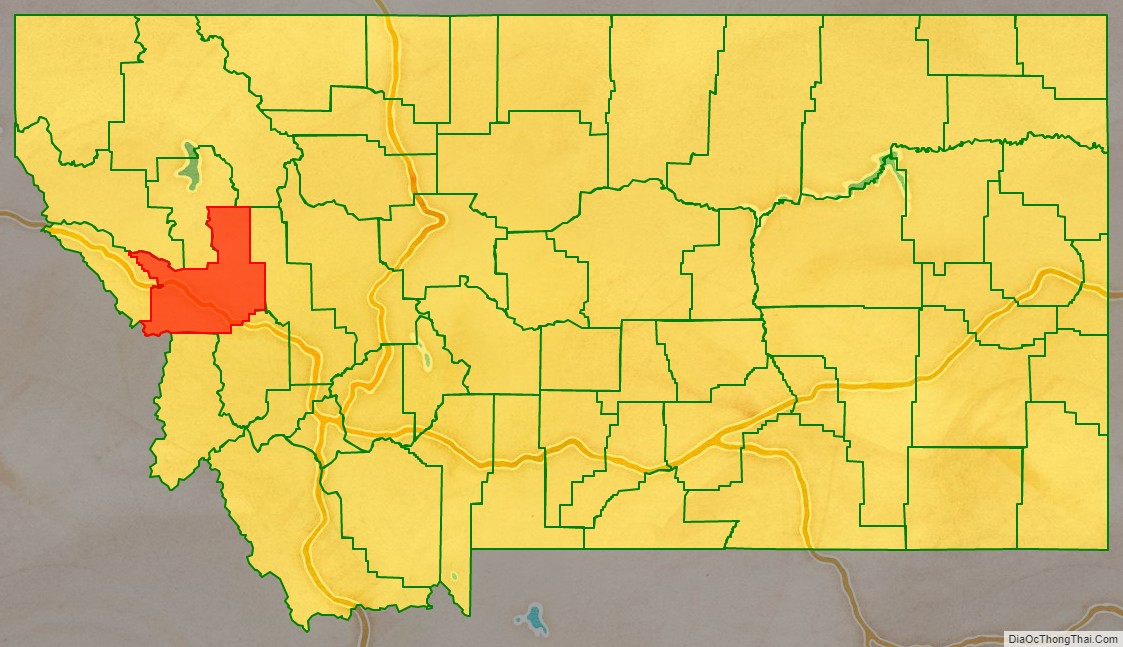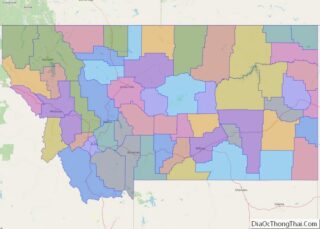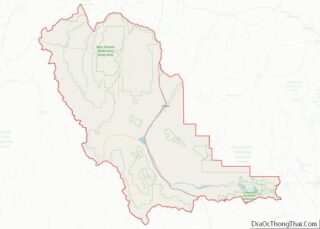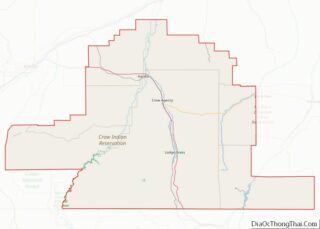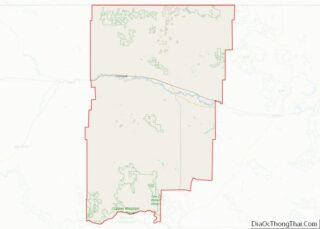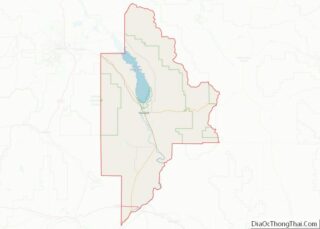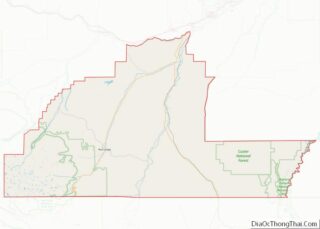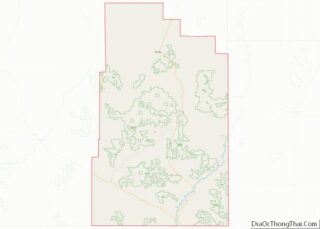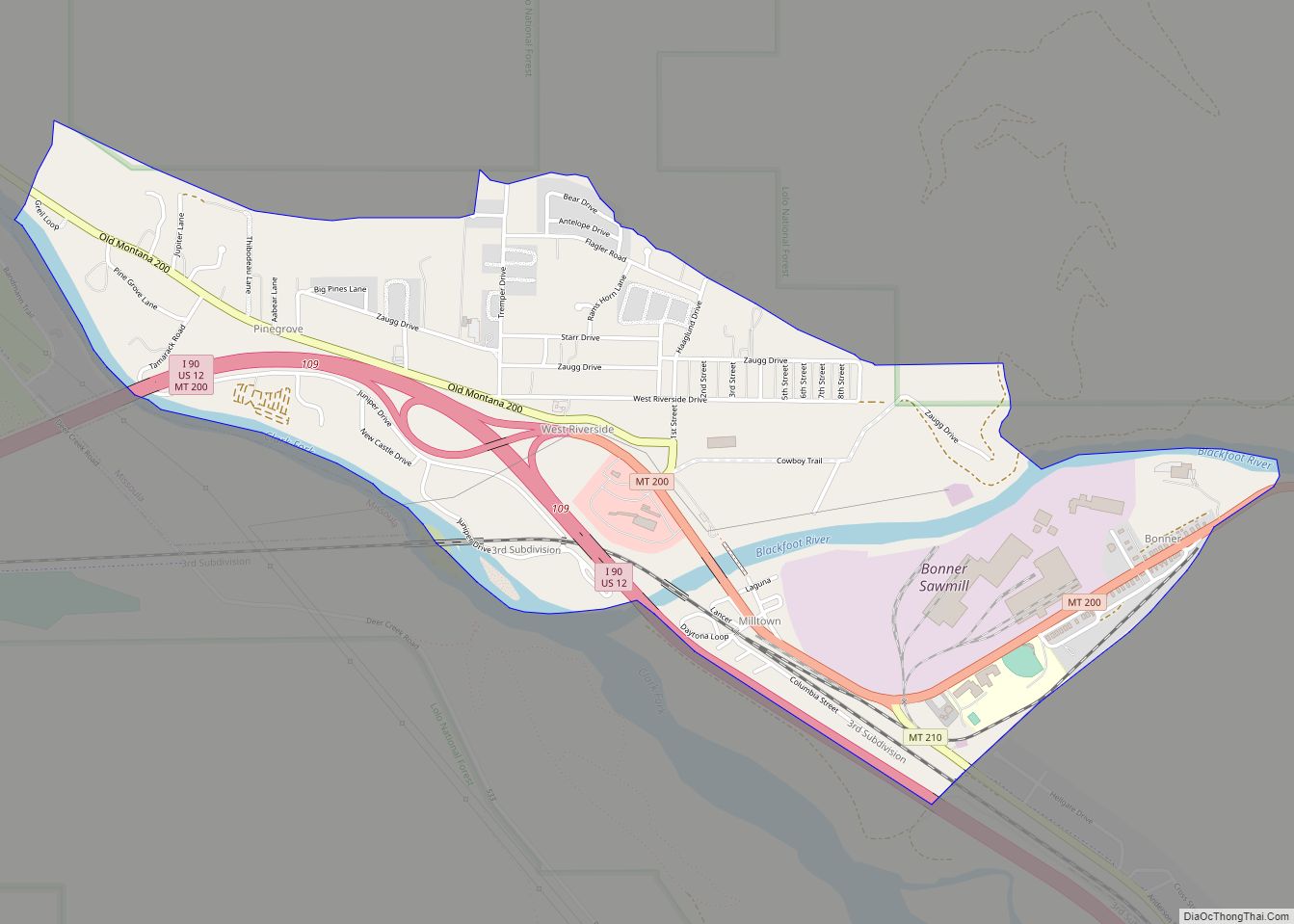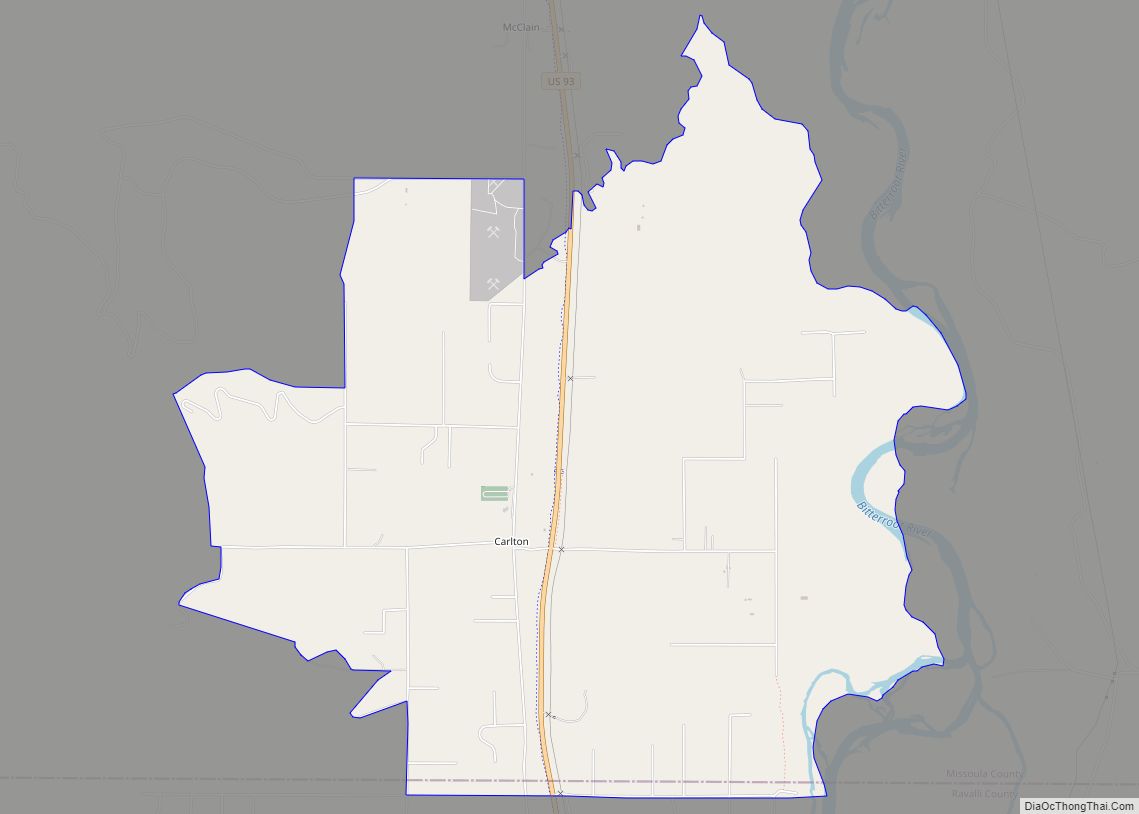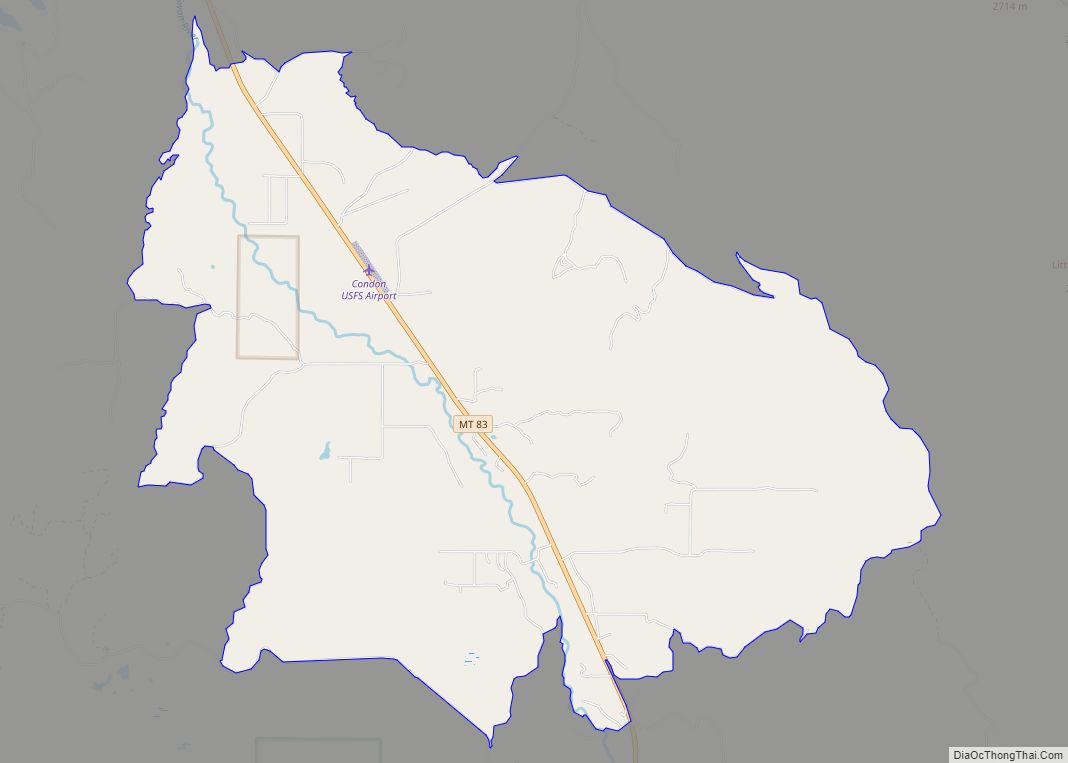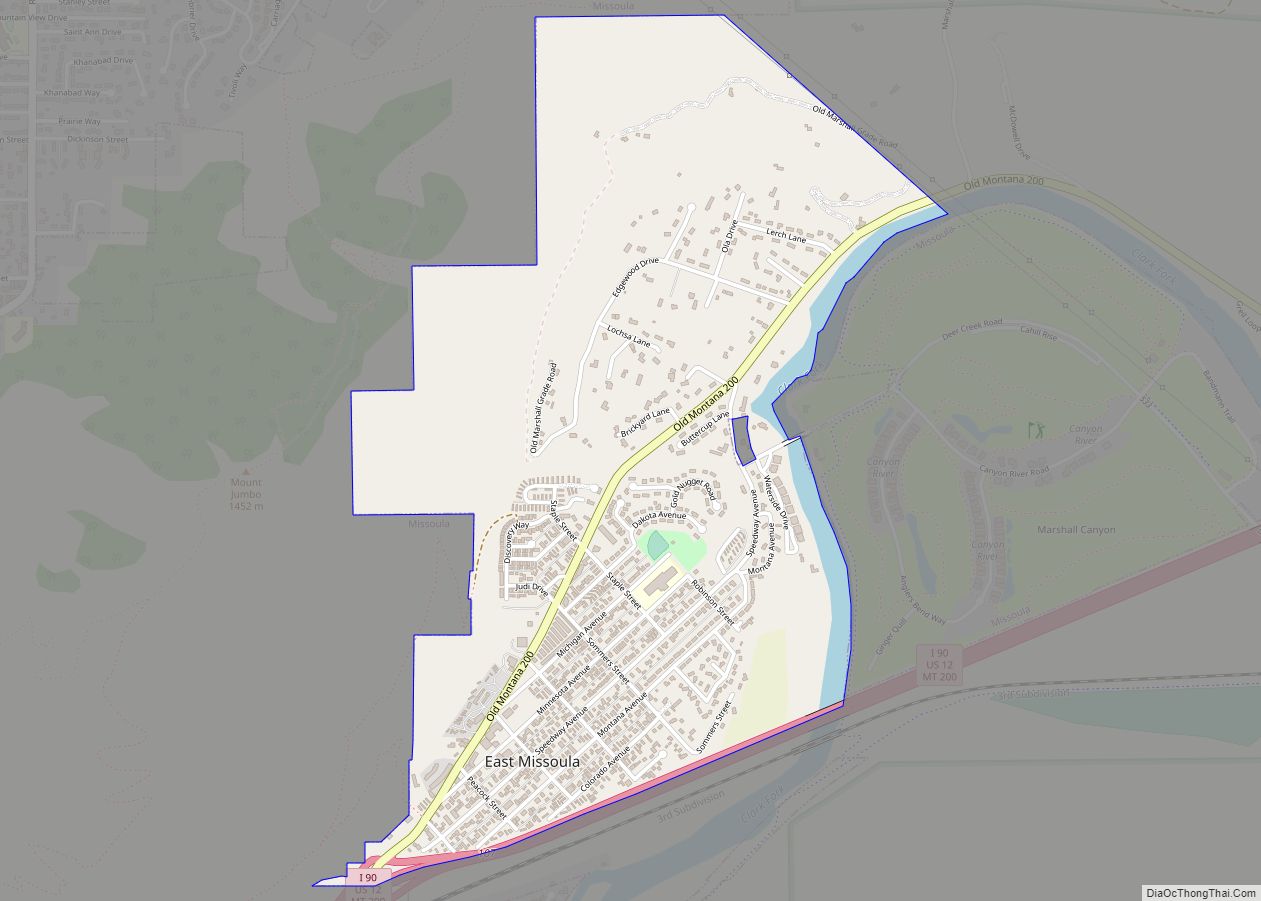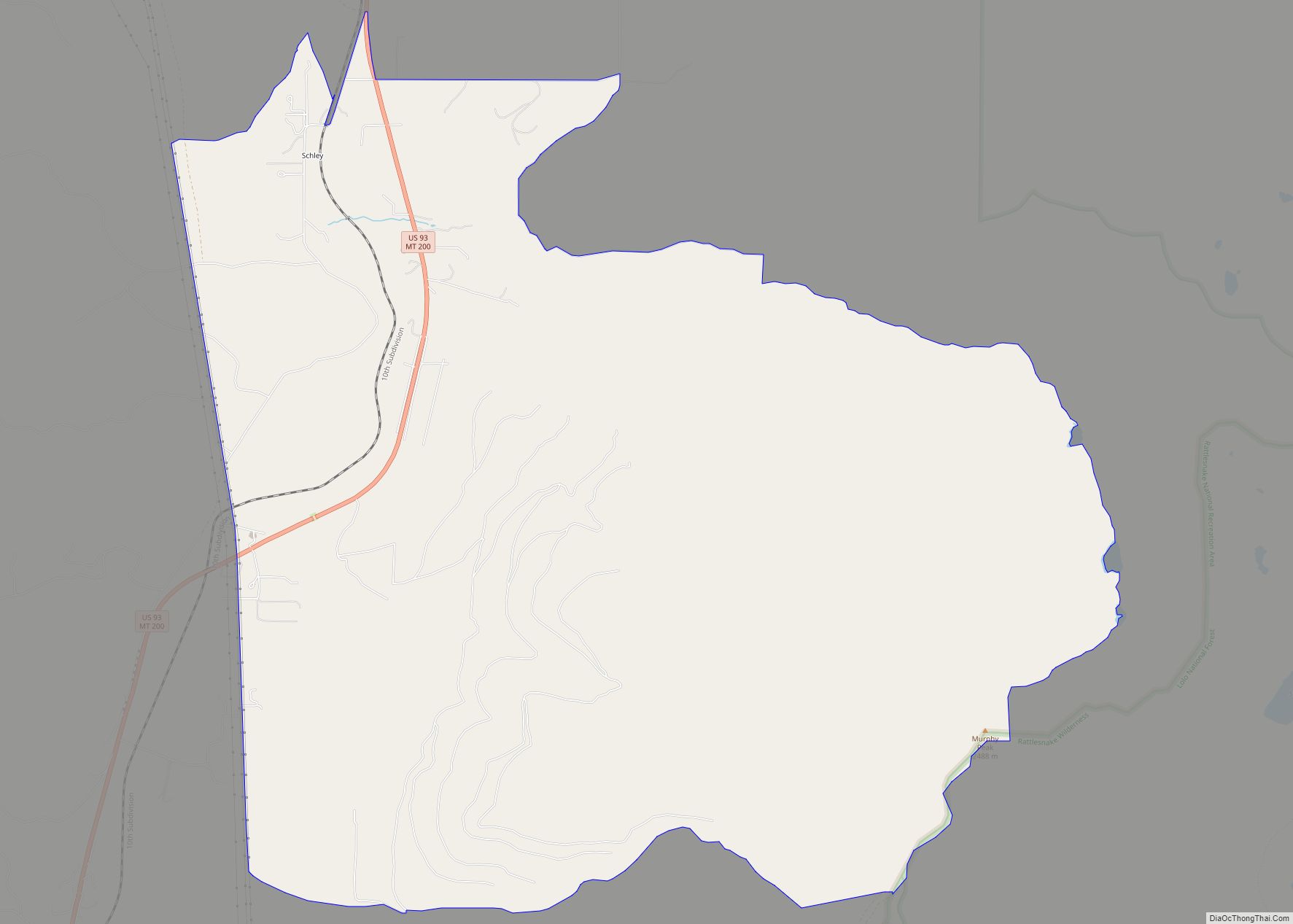Missoula County /mɪˈzuːlə/ (listen) is located in the State of Montana. As of the 2020 census, the population was 117,922, making it Montana’s third-most populous county. Its county seat and largest city is Missoula. The county was founded in 1860.
Missoula County comprises the Missoula, MT Metropolitan Statistical Area.
| Name: | Missoula County |
|---|---|
| FIPS code: | 30-063 |
| State: | Montana |
| Founded: | December 14, 1860 |
| Seat: | Missoula |
| Largest city: | Missoula |
| Total Area: | 2,618 sq mi (6,780 km²) |
| Land Area: | 2,593 sq mi (6,720 km²) |
| Total Population: | 117,922 |
| Population Density: | 45/sq mi (17/km²) |
| Time zone: | UTC−7 (Mountain) |
| Summer Time Zone (DST): | UTC−6 (MDT) |
| Website: | www.missoulacounty.us |
Missoula County location map. Where is Missoula County?
History
Missoula County, Washington Territory was incorporated in 1860, when this area was still part of Washington Territory. Missoula County encompassed present-day Missoula and Deer Lodge Counties, as well as a large area of land north and south of present-day Missoula County. Hell Gate Town, the county seat, was at the confluence of the Clark Fork and Bitterroot Rivers.
The area encompassing today’s Missoula County became part of the United States as a result of Oregon Treaty of June 14, 1846. It was part of the Oregon Territory’s Clark County, which replaced the District of Vancouver September 3, 1844. The territory was divided on March 2, 1853, with Clark County becoming part of the new Washington Territory. Clark County was divided the next year to create Skamania County, which a month later was divided to create Walla Walla County, which was further divided in 1858 to create Spokane County. On December 14, 1860, Missoula County was carved out of Spokane County with the first county seat at Hell Gate. The county made up the region between modern-day Idaho and the Continental Divide north of the 46th parallel. When Idaho Territory was created in 1863 it adopted Missoula County as the territory’s 3rd county on January 16, 1864, with more or less the same boundaries and Wordensville (present Missoula) established as the county seat. This first county consisted of all or part of current Ravalli, Missoula, Granite, Deer Lodge, Silver Bow, Powell, Mineral, Lake, Sanders, Lincoln, Flathead, and Glacier Counties.
Missoula County became a part of Montana Territory when the territory was organized out of the existing Idaho Territory by Act of Congress and signed into law by President Abraham Lincoln on May 26, 1864. At this time Deer Lodge County (today Deer Lodge, Granite, Silver Bow, and Powell Counties) was cut out of Missoula. The creation of Flathead (today Flathead and Lincoln Counties) and Ravalli Counties in 1893, Powell in 1901, Sanders in 1905, Mineral in 1914 and finally Lake County in 1923 gave Missoula its present borders.
Missoula County Road Map
Geography
According to the United States Census Bureau, the county has a total area of 2,618 square miles (6,780 km), of which 2,593 square miles (6,720 km) is land and 25 square miles (65 km) (1.0%) is water. It is the 24th largest county in Montana.
Geographic features
Five large valleys and two major rivers wind through this mountainous region.
Flora and fauna
Located in the Northern Rockies, Missoula County has a typical Rocky Mountain ecology. Local wildlife includes white-tailed deer, black bears, osprey, and bald eagles. During the winter months, rapid snow melt on Mount Jumbo due to its steep slope leaves grass available for grazing elk and mule deer. The rivers around Missoula provide nesting habitats for bank swallows, northern rough-winged swallows and belted kingfishers. Killdeer and spotted sandpipers can be seen foraging insects along the gravel bars. Other species include song sparrows, catbirds, several species of warblers, and the pileated woodpecker. The rivers also provide cold, clean water for native fish such as westslope cutthroat trout and bull trout. The meandering streams also attract beaver and wood ducks.
Native riparian plant life includes sandbar willows and cottonwoods, and Montana’s state tree, the ponderosa pine. Other native plants include wetland species such as cattails and beaked-sedge as well as shrubs and berry plants like Douglas hawthorn, chokecherry, and western snowberries. Missoula is also home to several noxious weeds which multiple programs have tried to eliminate. Notable ones include Dalmatian toadflax, spotted knapweed, leafy spurge, St. John’s wort, and sulfur cinquefoil. The Norway maples that line many of Missoula’s older streets have also been declared an invasive species.
Climate
Missoula County has a semi-arid climate (Köppen climate classification BSk), with cold and moderately snowy winters, hot and dry summers, and spring and autumn are short and crisp in between. Winter conditions are usually far milder than much of the rest of the state due to its western position within the state. However the mildness is also induced by the dampness, as unlike much of the rest of the state, precipitation is not at a strong minimum during winter. Winter snowfall averages 43 inches (109 cm), with most years seeing very little of it from April to October. Summers see very sunny conditions, with highs peaking at 84 °F (28.9 °C) in July. However, temperature differences between day and night are large during this time and from April to October, due to the relative aridity.
National protected areas
- Bitterroot National Forest (part)
- Flathead National Forest (part)
- Lolo National Forest (part)
- Rattlesnake National Recreation Area
Major highways
- Interstate 90
- U.S. Highway 12
- U.S. Highway 93
- Montana Highway 83
- Montana Highway 200
Adjacent counties
- Mineral County – west
- Sanders County – northwest
- Lake County – north
- Flathead County – northeast
- Powell County – east
- Granite County – southeast
- Ravalli County – south
- Idaho County, Idaho – southwest/Pacific Time Border
- Clearwater County, Idaho – southwest/Pacific Time Border
